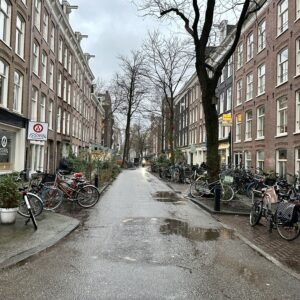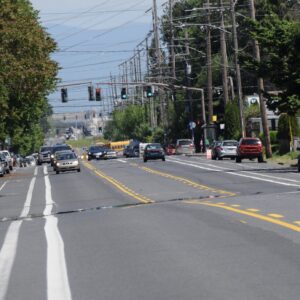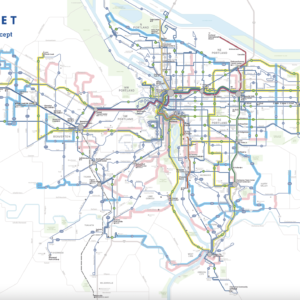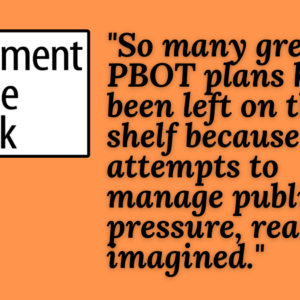The Washington DC-based Rails-to-Trails Conservancy (RTC) plans to launch a national campaign that would seek $2 billion for 40 communities to fund non-motorized transportation projects in the next federal transportation bill, which is up for re-authorization in 2010.
Calling it their 2010 Campaign for Active Transportation, the national advocacy group is in the early stages of identifying communities that could make a compelling case to Congress for a $50 million share of this money.
The RTC — who will hold their annual conference in Portland this August — hopes to make this campaign a “key national program in advancing pedestrian and bicycle facilities,” and they’ve got the clout to make it happen.
Arguably the most well-connected and powerful bicycle and pedestrian advocacy group in the country, the RTC were key players in the “Non-motorized Transportation Pilot Program” that was adopted into the most recent federal transportation bill passed in 2005.
That program resulted in four communities getting $25 million each to, as the RTC puts it, “demonstrate that targeted investments can shift trips to bicycling and walking.”
The communities were:
- Marin County, CA
ColumbusColumbia, MO- Minneapolis, MN
- Sheboygan County, WI
The RTC sees this new campaign as the natural extension of that program. Their VP of Policy, Kevin Mills told me that, “if it worked so great for four communities, why not forty?”
If the campaign succeeds and becomes funded in the next transportation bill, interested communities would then work with the RTC to lobby congress in order to be selected.
Given that Portland is positioned to become America’s first truly “World-class” biking city (all that’s missing is money), and given the transportation policies and current political positioning of Oregon’s Congressional delegation, I think Portland would stand a very good chance of being selected.
Mills said they plan to officially launch this program at their annual conference in Portland on August 7-10th.







Thanks for reading.
BikePortland has served this community with independent community journalism since 2005. We rely on subscriptions from readers like you to survive. Your financial support is vital in keeping this valuable resource alive and well.
Please subscribe today to strengthen and expand our work.
very cool. looking forward to their conference in Portland.
Maybe we can get rid of the worthless tram in Lake O and get a real bike path instead. It would open up PDX to so many communities. Right now the two options are hwy 43 (deathtrap) and terwilliger (a nice climb for the uninitiated.)
Go by bike!
I think you meant to type in Columbia, MO (not Columbus, MO). Many bike paths there right off of the Katy Trail.
🙂
Note: This is just a topic of curiosity, and I want to know other people’s opinions.
Question: Do you think it is a good idea to rip-up rail lines, in order to make bike paths. Rail is one of the most efficient ways to transport goods (far better than diesel trucks). Also, I know no one who doesn’t regret the trolley lines that were ripped-up in the 50’s. We could have used those now too.
I personally, think this is a sideways conspiracy to get people on roads and not to use alternative ways to commute or transport goods.
Now your thoughts.
~n
Nick,
Just to clarify, the Rails-to-Trails Conservancy does much more than just rail-trail projects.
Their mission statement says that they try to turn abandoned lines into trails. I don’t think RTC has any impact on how goods are moved around the US.
Bjorn
Nick,
I lived and biked in Minneapolis for several years and made great use of the extensive network of rail-to-trails, as did many other people. A well conected trail system is basicly a highway for bikes. One trail (The midtown greenway) was formerly a rail corrider that ran through the center of the city east to west. In it’s life as a rail corrider it was a dangerous, dark place overrun with drugs and violence. Now days it’s a beautiful well lit bike super highway removed from traffic. It is safe, lovley to behold, and a big boone for property values and neighborhood recreational access. Not to mention most of that rail land was given to the rail barons for nothing, in some casses the govermant waged wars for that land (see Indian wars). That land belongs to the citizens of this country. The fact that it’s already graded helps too. I wish there where more rail-to-trail every where.
First of all I think this is a great program. With the limited access ways into our cities this is the perfect way to create routes that citizens could use for recreation and commuting.
My point is just an observation, that when ever I have ridden on a rail converted bike path (like the Springwater Corridor) there is a small part of me that longs for the trolly that ran there. Not for me, but for the city.
It’s just a thought. Just the ol’ model train builder in all of us. 🙂
Ride on!
~n